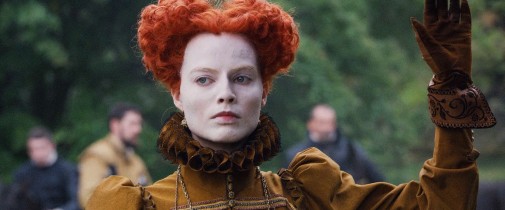
Since her 2013 breakthrough in The Wolf of Wall Street, Margot Robbie's Hollywood career has risen so consistently and quickly that its verging on meteoric. Early stabs at blockbuster stardom paid off with her über-popular Harley Quinn, soon giving way to more prestigious pursuits. I, Tonya earned the Australian actress her first Oscar nomination, and a second soon followed for Bombshell. This year, beyond dominating social media while location shooting for Greta Gerwig's upcoming Barbie, Robbie returns with two big movies. First up is David O. Russell's Amsterdam which opens Friday under a wave of controversy and critical scorn. Then, on Christmas Day, Damien Chazelle's Babylon finds her playing a Clara Bow-type in one of the year's buzziest titles.
As we wait to see if Robbie ends the season as a three-time Oscar nominee, let's turn our minds back to when the thespian tried her hand at playing one of the most dramatized figures in film history – Elizabeth I in Mary, Queen of Scots…
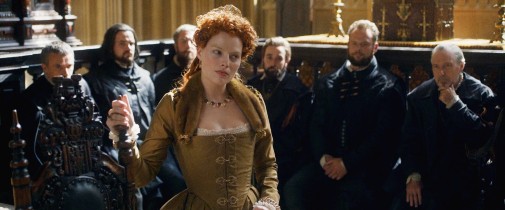
Josie Rourke's feature film debut is a desultory disappointment, falling into costume drama clichés like an ungainly klutz tumbling headfirst into a cow pat. The results are sad, stinking up the place with melodramatic inefficiencies and the unmistakable stench of joyless mediocrity. Attempts at updating the tragedy of Mary Stuart to modern sensibilities end up robbing the characters of complexity, flattening two of European History's most fascinating women into clumsily modernized archetypical figures. Maybe all this would be easier to ignore if the film hadn't come out so close to another historical fiction about a British queen with a denim-heavy stylized wardrobe.
Compared to The Favourite, Mary, Queen of Scots is even more dismay. To play with anachronism in text and style, twisted facts, and dramatic opulence can be a wonderful thing. Unfortunately, that's not the case for this 16th-century soap opera. Such is the fate of Mary Stuart in Hollywood, forever doomed to puerile fictionalizations, too afraid to contend with the monarch's complicated history or to diverge from it in exciting ways. At least John Ford's film had style to spare, and the 1971 movie sprung to life whenever Glenda Jackson's Elizabeth I was on-screen. While Robbie doesn't reach such heights, she's often the best thing the 2018 Mary, Queen of Scots has going for it.
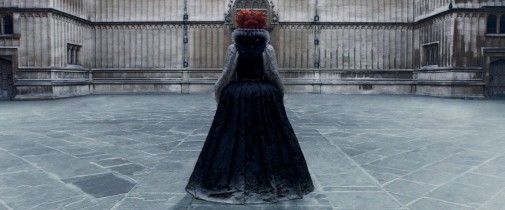
Our first glimpse of Robbie as the famous monarch comes in the film's flashforward prologue, during Mary Stuart's long walk to the scaffold. It's 1587, and the Scottish queen is an idealized vision of Catholic martyrdom, her face unchanged from when she was a teenage widow returning to Scotland, 27 years before she'd face the executioner's blade. Elizabeth, however, is only seen from behind, attired in one of Alexandra Byrne's few attempts at recreating actual fashion history rather than a fantasy made to appease modern eyes. In short, she's a piece of iconography, distant from the audience and denied the romance of Mary's framing.
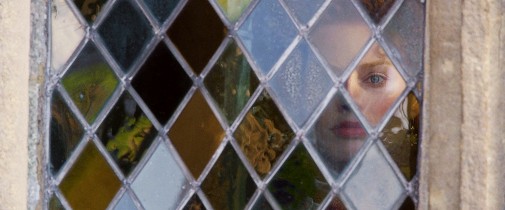
There's a dynamic of contrasts between these two women, something that doesn't have much to do with the actress' performances and all to do with how their characters have been conceived by the text, the camera. Our real introduction to Elizabeth perpetuates this, opening with a closeup shot where Robbie's face is fragmented by the diamond-shaped grid of a palace window. As the camera cuts and she moves away from the sun, we finally get a proper view of the queen. Unlike Ronan, Robbie's visage is transformed by cosmetic wizardry, a prosthetic nose shaping her profile to look more like the person seen in all the famed portraits.
It's the first of many scenes played out in indistinguishable fashion. Elizabeth stands as a steely figure, flinty looks suggesting a sense of political assessments while a male subordinate expounds exposition, most of which comes from read-aloud correspondence. There's not much for Robbie to do other than suggest personhood through reaction, grasping at an exteriorization of strategic intelligence that the film keeps denying her. The accent work is no more egregious than Ronan's, while the poses sometimes verge on the superficial. But, then again, what else can the actress do when the very next scene finds her fretting over how she might compare to Mary's youthful good looks?
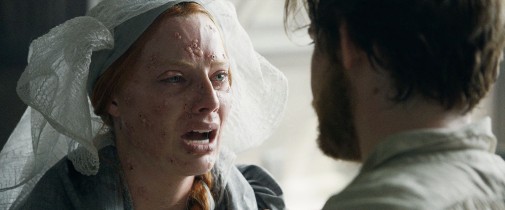
Rather than power, Robbie is asked to play insecurity barely hidden behind royal pageantry. Her attempts at authority in early passages mostly manifest in half-convincing peacocking through long corridors full of men who seem to look down on her even as they bow before her majesty. And yet, it feels unfair to criticize Robbie for how the film underserves both actress and character. When asked to perform the despair of a pox-ridden queen made mad by jealousy, it's admirable how much she goes full-tilt into the grotesque possibilities of the scenario. Shedding beautiful single tears over a scarred face, discombobulated physicality at full tilt, Robbie's Elizabeth is a memorable sigh.
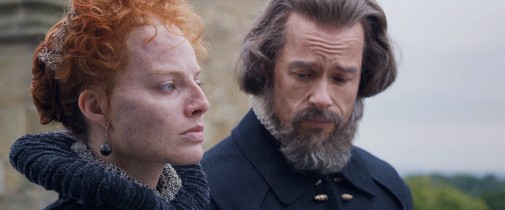
Still, she's capable of subtlety in this role, dialing back the growing brittleness of Elizabeth's physicality for a rooftop conversation about marriage and civil war. In such a scene, she's planted firmly like a statue, voice working overtime to modulate the varying tonalities in the dialogue. Sorrow encompasses the exchange, but there are notes of irritation, a final tremor of swallowed regret as the terms of revolt are settled. Indeed, Robbie's best scenes are her one-on-one interactions with other cast members. In those moments, she's unencumbered by the need for authoritarian posturing or the yearnings for maternity expressed through frowns over foals, forlorn over symbolic paper flowers.
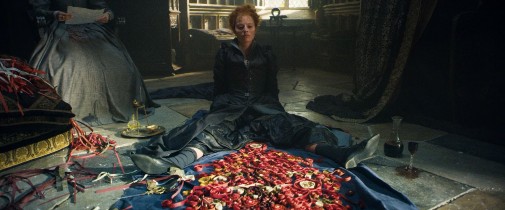
The pinnacle of Robbie's performance marries that conversational precision to the heightened tenor of her queenly drag cum gnarly meltdown. Playing the fictional meeting of queens that every one of the multiple Mary Stuart movies force upon their narrative, the actress gets to bring the house down. Her strategy doesn't exaggerate the prickly severity of the English sovereign. Instead, in the face of her exiled cousin, she appeals to a sense of great exhaustion, a great queen reduced to helplessness. There's value to playing the woman rather than the symbol, illuminating personhood crumbling under self-pity and the loneliness of power.
Nevertheless, Robbie is unsupported by her movie, and every insight into the character feels cajoled by mawkish precepts. She tries valiantly and breathes life into Mary, Queen of Scots at the last minute. The meeting scene and subsequent montage seem keen on replicating what Blanchett and Kapur did at the end of Elizabeth, singing an aria of self-inflicted dehumanization. The queen becomes more than a person, but also less. The character transcends her earthly identity and takes control of the picture's POV, justifying the idealized vision of Mary as a continuation of the Tudor queen's self-image. It never quite works, and it's not enough to justify a nomination, but one commends the filmmakers' efforts, especially Margot Robbie's.
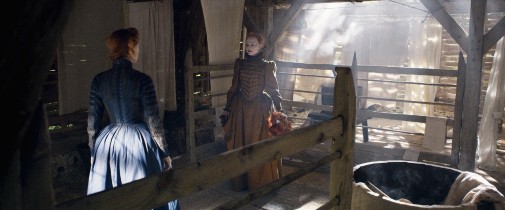
The 2018 Best Supporting Actress race was a chaotic affair. The Favourite duo– a blatant case of category fraud – and Amy Adams were pretty locked, but no other contender scored nominations from all major precursors, not even the eventual winner. All this to say that it was a year full of 'almost there' contenders, including Margot Robbie, whose take on Queen Elizabeth I scored her citations from SAG and BAFTA. The film managed to nab two Oscar nominations for its costumes, makeup and hairstyling. It won neither category, losing the former to Black Panther and the latter to Vice. But what about the Supporting Actress pandemonium?
In the end, AMPAS nominated the aforementioned Amy Adams in Vice, Regina King in If Beale Street Could Talk, Emma Stone in The Favourite, Marina de Tavira in Roma, and Rachel Weisz in The Favourite. King won, in the end, becoming only the second performer since the start of the SAG awards to win this particular Oscar without a guild nomination. The first was Marcia Gay Harden for Pollock, who, like Marina de Tavira, crashed into the Academy's lineup with nearly no precursor support. If not for the Mexican actress' surprise success, maybe Robbie would have been a nominee. Or maybe Emily Blunt or Claire Foy were closer. It's difficult to say.
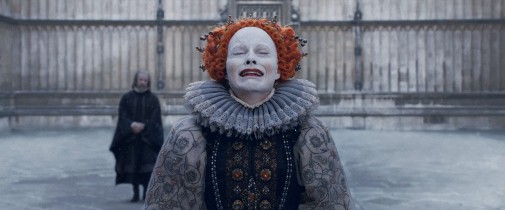
You can rent Mary, Queen of Scots on many different services, including most major platforms.